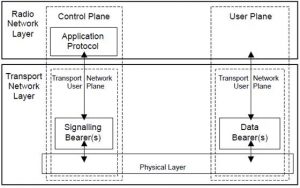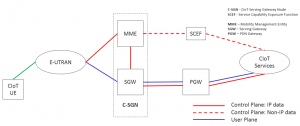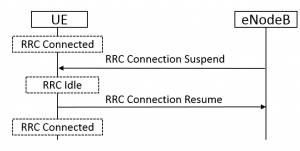Data optimisation for cellular IoT: Part 1

Martin Varga of Anritsu Europe
The Internet of Things (IoT) is a new addition to the range of capabilities enabled by global telecommunication networks and opens up many new possibilities for applications and services.
Interconnecting a massive number of different devices via new systems for data transmission and connectivity, this new concept provides opportunities in different industrial sectors including the creation of smart homes, smart cities, industrial Internet systems, connected cars, improved healthcare systems and many more, says Martin Varga of Anritsu Europe.
The Internet of Things is not just about new application and services: it embraces the whole technological spectrum that enables all of these innovations. This technology is evolving from today’s LTE and GSM mobile communication networks and their enhancements to meet new requirements.
This article outlines some of the technologies involved in optimising the performance of cellular IoT systems.
Cellular IoT technologies
Even before the new cellular IoT technologies like Cat-M1, NB-IoT and EC-GSM were present in industry, there was already a need for connectivity with devices like vending machines, water pumps or home alarms. These applications required relatively small amounts of data transmission, did not require battery power because they were always connected to the electrical grid network, and had no or very limited mobility needs.
To enable these applications, standard GSM/GPRS modems offering sufficient data throughput and connectivity were typically used. Further development of applications and services revealed new requirements including battery-powered devices, the need for enhanced coverage of the access network in order to access devices in deep indoor locations and much lower-cost devices.
These requirements led to the development of new technologies based on LTE and GSM. The first LTE-based technology is Cat-M1, also known as LTE-M or eMTC (enhanced Machine Type Communication). It is defined as a new LTE category “M1”. This was followed by NB-IoT (for Narrow Band IoT), also called LTE-Cat-NB1 which is also defined as a new LTE category “NB1”. The third cellular IoT technology is GSM based and is called EC-GSM (Extended Coverage GSM) or EC-GSM-IoT. Each cellular IoT technology has its own characteristics defined by different uplink and downlink speeds, latency and coverage (Table 1).

Table 1: Cellular IoT technologies (*MCL – Maximum Coupling Loss)
Data transfer
Data transfer between the network and device is typically done through the user plane (Fig.1), which is dedicated solely to the transfer of user data and does not contain any signalling messages to control the device or network. User data are encapsulated into IP packets and transferred through a dedicated channel via data bearers between the network and device.

Figure 1: Control and user plane
Successful IP connectivity requires a Packet Data Network (PDN), which defines the allocation of IP addresses and identifies the nodes for the transfer of IP packets. This allows the transfer of user data from a particular device to a particular node in a network identified by its IP address.
This method is particularly effective where a large amount of user data has to be transferred on a regular basis. In such cases, the bandwidth available in the access network does not require optimisation for the transferred data and the transmission process. However, in cases where the amount of user data is very small, where transmission is irregular or intermittent, and where the device requires a minimal amount of time for connection and transmission, new methods for transmission need to be applied.
These methods are based on the optimisation of transport protocols to enable a very short connection time of the device which in turn reduces the power consumption and also saves the limited bandwidth for data transmission.
Data optimisation
IoT applications which require the transmission of very small amounts of data – for example, the reading of the amount of water from a water meter located in the basement of a building – normally use NB-IoT technology, which also has a small transmission bandwidth. If an IPv6 header (which has at least 40 bytes) is used for encapsulation, the headers may require a significant part of the user data for transmission.
If in addition a full radio data bearer is required for transmission every time the device needs to transmit the data, significant connection time is again involved, which has an impact on the battery life of the device. Such transmission becomes inefficient and methods are required to make it more efficient to meet the requirements of IoT applications.

Fig.2 shows the different data paths in an IoT network infrastructure, with optimisation of data transfer being implemented in both user and control planes.
User plane EPS optimisations
User plane EPS optimisation enables the support of user data transmission without the need to establishing new access stratum context between eNodeB in the E-UTRAN access network and the user equipment (UE). The first precondition of using this function is initial establishment of access stratum bearers and security contexts in the network and the UE.
Radio resource control (RRC) connection is then suspended using the connection suspend procedure and then again resumed with connection resume procedure (Fig.3). The advantage of this method is that the UE does not need to establish new bearers and security context: instead, it just resumes access stratum information stored during the connection suspend procedure.
This optimisation takes into account the fact that user data are transferred through the standard S1-U interface between eNodeB in the E-UTRAN access network and the SGW gateway.

Figure 3: RRC Suspend and Resume procedure
Part 2 of this article will appear tomorrow
The author of this blog is Martin Varga of Anritsu Europe
Comment on this article below or via Twitter @IoTGN
